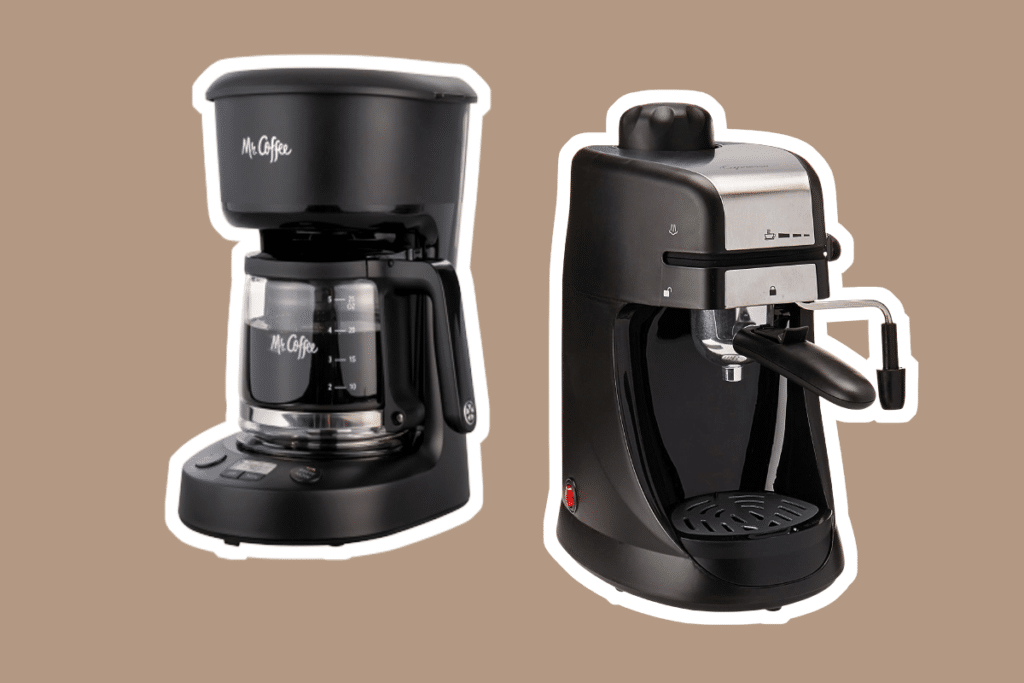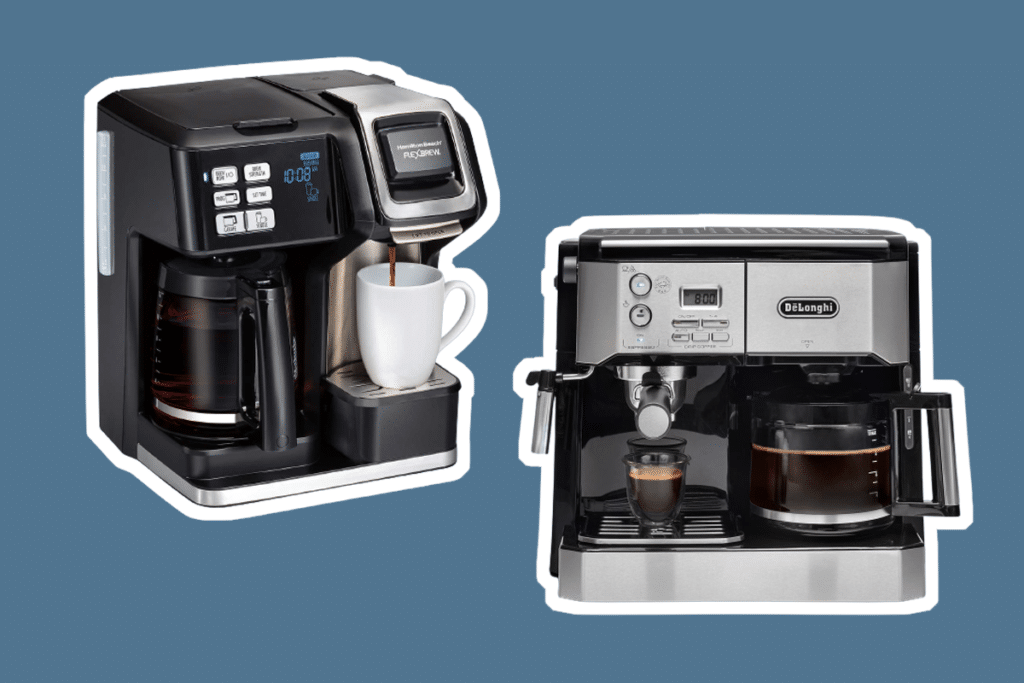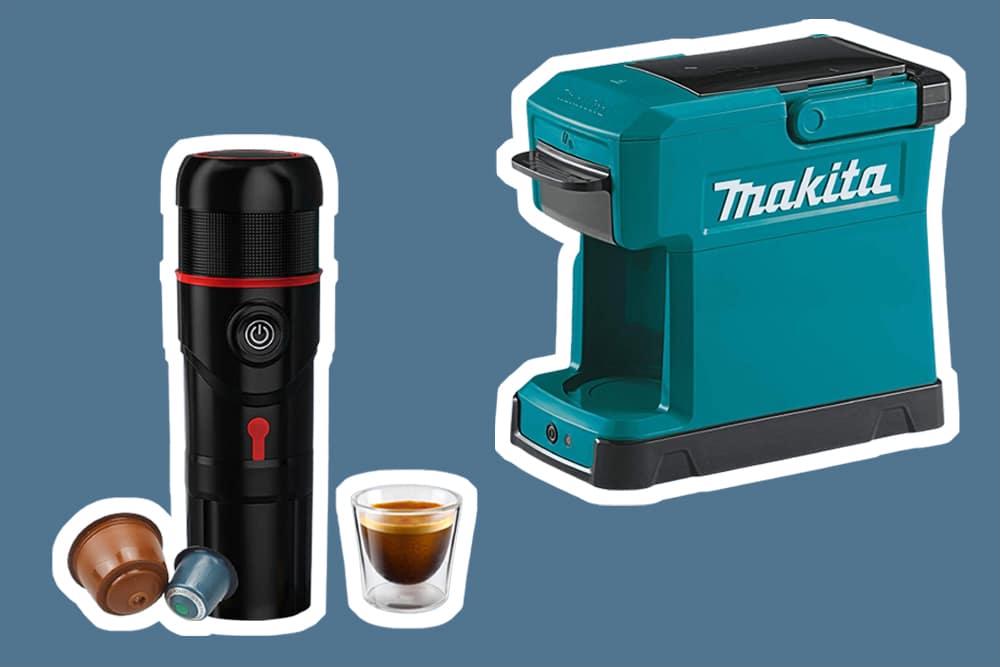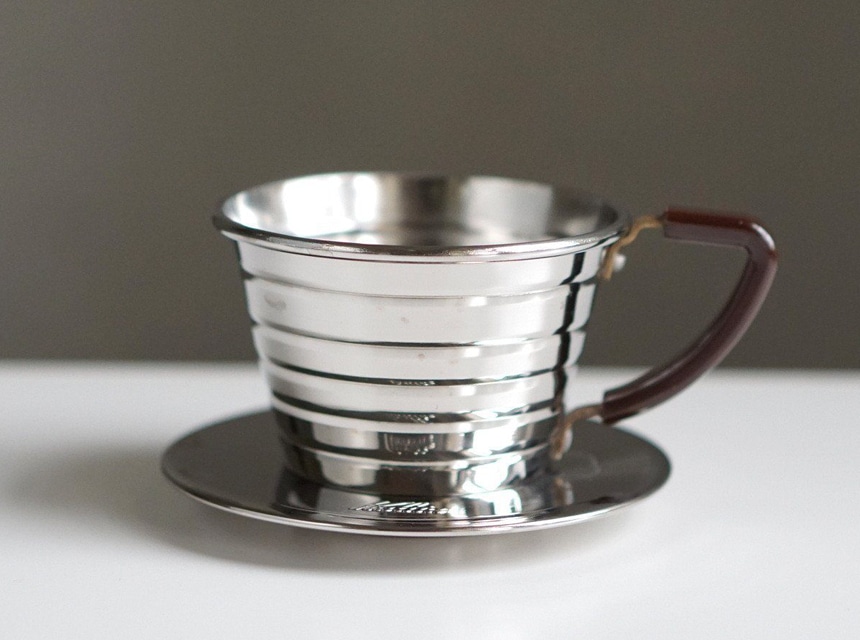

You already know that there are several ways to brew a cup of coffee, right? From the old traditional cowboy coffee kettles to the modern espresso machines, there are dozens of types of coffee makers that can help you in the brewing. Well, do you know which one is right for you?
Using quality beans is certainly the first step in making great coffee. The coffee maker used, however, is also critical. Each extraction method highlights specific beverage characteristics after brewing.
There are coffee makers of all sizes and types whether it’s for those in a hurry and convenience or for those, who prefer to make coffee in style.
In this post, we’ll talk about four general types of coffeemakers. Each comes with extended subtypes. Read to the end, and you’ll certainly find the one that suits you best!
We already said there are various ways to prepare your early morning or office-break coffees. In this section, we’ll see the common ways of brewing a coffee. In summary, these include boiling (decoction), steeping (infusion), filtration (as in drip brewing and percolator types) and pressurized (i.e. espresso) methods. Also, for each method, we’ll see what types of coffee makers are there. But first, let’s begin with the most traditional method of coffee brewing – boiling.
The boiling method of brewing coffee is a cue taken from the time past. But they are still relevant today, for example, in case of power outage. The most important thing is to have your coffee beans grounded and have a teapot or kettle boiling with water.

The Turkish coffee maker is a simple extraction method but full of meaning and tradition. Prepared on the jezve, with this method, it is possible to flavor the coffee by adding spices such as cinnamon, star anise, and cardamom. The powder is boiled along with water. So, the result is a caffeine-rich bitter drink.
Turkish fashion uses very fine grinding powder; more than cafes in supermarkets. This is because the drink is not filtered and you drink a full-bodied coffee with mixed powder.
To prepare a coffee with this method, first place 7g of coffee (1 tbsp) in an ibrik, as is also known as the coffee maker. Then add some spice or sugar if you wish. However, remember that a special coffee doesn’t have to be sweetened.
Add filtered water and then bring the coffee maker to the fire. Coffee in this method should boil three times as follows: when the water boils, remove the cezve from the flame. Wait a few seconds and put in the fire again. Repeat this twice, and the third time it boils, just take the foam off with a spoon and serve.
But before you take it, wait a little longer for the powder to go to the bottom of the cup. All these procedures take about 10 minutes.
The so-called “cowboy coffee” makers are what is familiar to the historical cowboys. What is referred to as the cowboy coffee makers are simply the cowboy coffee kettle or tin coffee pot. However, wanting a cup of cowboy coffee doesn’t literally mean camping outdoors and roughing it out with some canines in the wild.
To make a “cowboy coffee” at home, all you need to do is to heat water on the stove. Add 220 to 280 ml (a cup or a little more) of water for each cup of coffee desired. Wait for the water to boil – into regular bubbles – but not too strong.
Then add one or two tablespoons (depending on your taste) of coffee powder for every 220 ml of water. Stir just enough for the circular coffee powder.
Then remove the mixture from the heat and smother. Let it sit for two to three minutes.
Some people prefer to boil the mixture once more for a minute or two. However, this makes the coffee more bitter. So, know your taste well before deciding.
Stir the coffee and let it sit covered for two to three minutes. This interval not only improves the taste of the coffee (longer = stronger coffee) but also allows the powder to settle to the bottom of the pot.
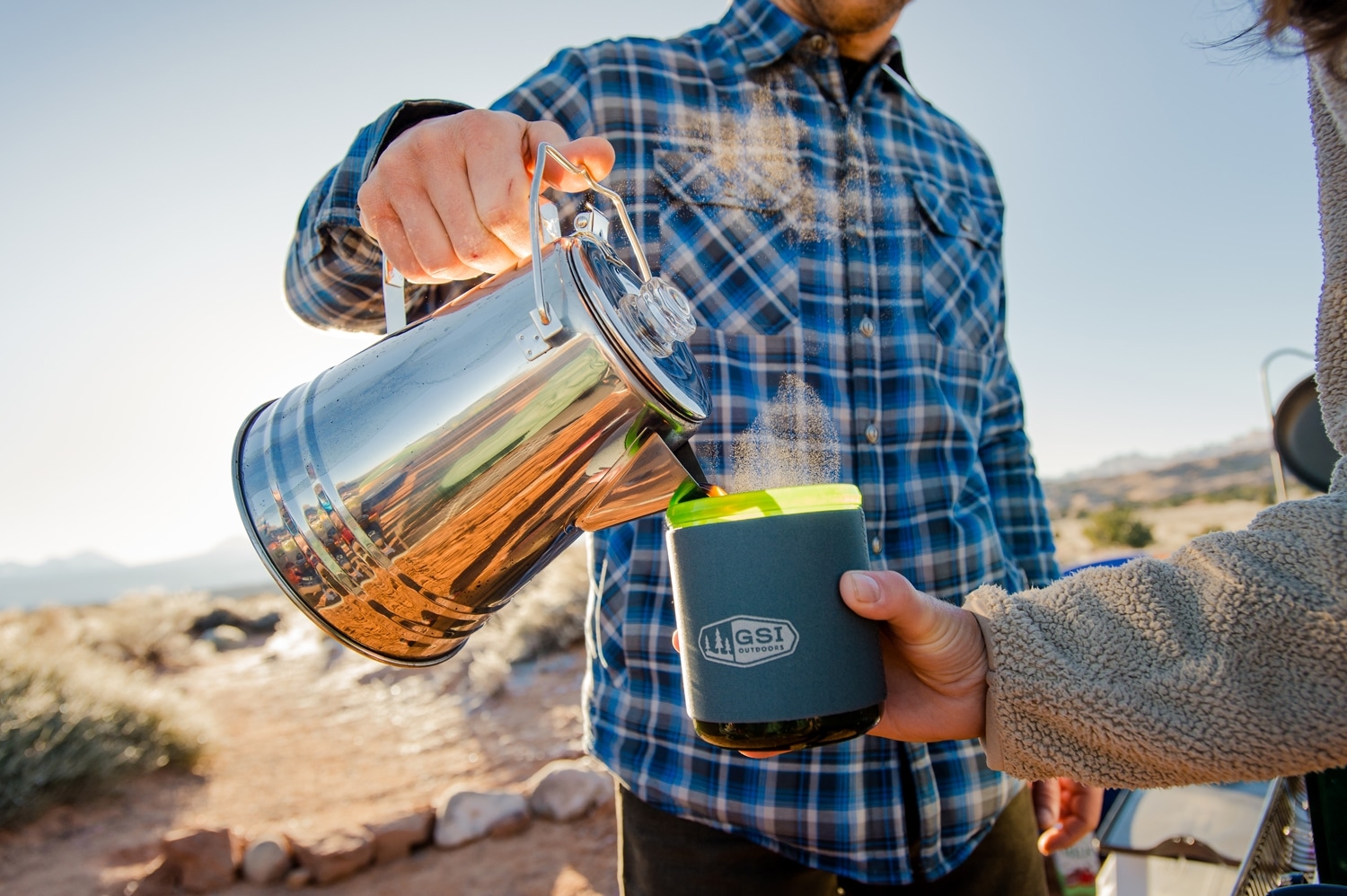
The steeping or infusion brewing method involves the process of water constantly running through a bed of coffee. Almost all drip brewing types of coffee makers use infusion.
This practical method is very popular in European homes. No paper filters or electrical power is used.
Firstly, the beans should be of medium grind so that they do not pass through the metal filter. After placing the powder in the coffee maker, add water between 80°C and 90°C and leave the coffee to be infused for four minutes. Then just lower the piston down the body of the coffee maker. Then the beans will be separated from the ready drink.
Besides being one of the most efficient methods, the French press preserves the natural oils of coffee and the taste of the drink.
Remember, because of the brew, the longer you wait to lower the plunger, the bitter the coffee will be. This is because hot water continues to extract caffeine from the beans, while the two elements are in contact.
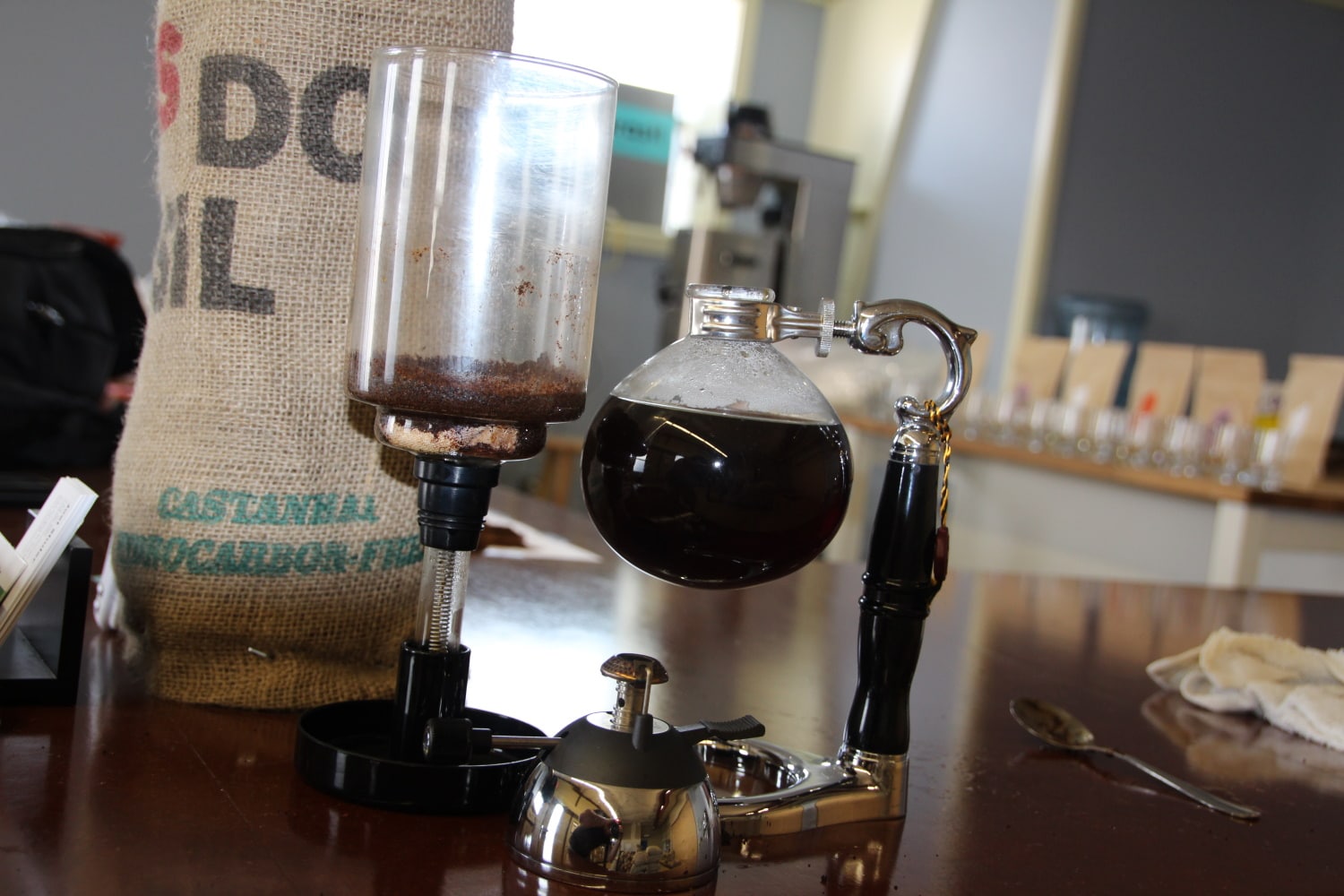
The coffee maker can prepare between four and eight delicious cups of coffee in 5 to 11 minutes.
The water will boil in the lower bowl and rise through the glass column in the upper bowl to mix with the coarsely ground coffee. The infusion is done at an ideal temperature around 95°C to extract the best flavor from the coffee and keep its oils and natural acids.
When the coffee has come down, it is ready to be tasted. Connoisseurs will tell you: this is one of the best methods for making coffee.
The filtration system is a commonly used physical or mechanical method. It involves separating fluids from solids through a channel in which only fluids can pass. With this, oversized solids are retained.
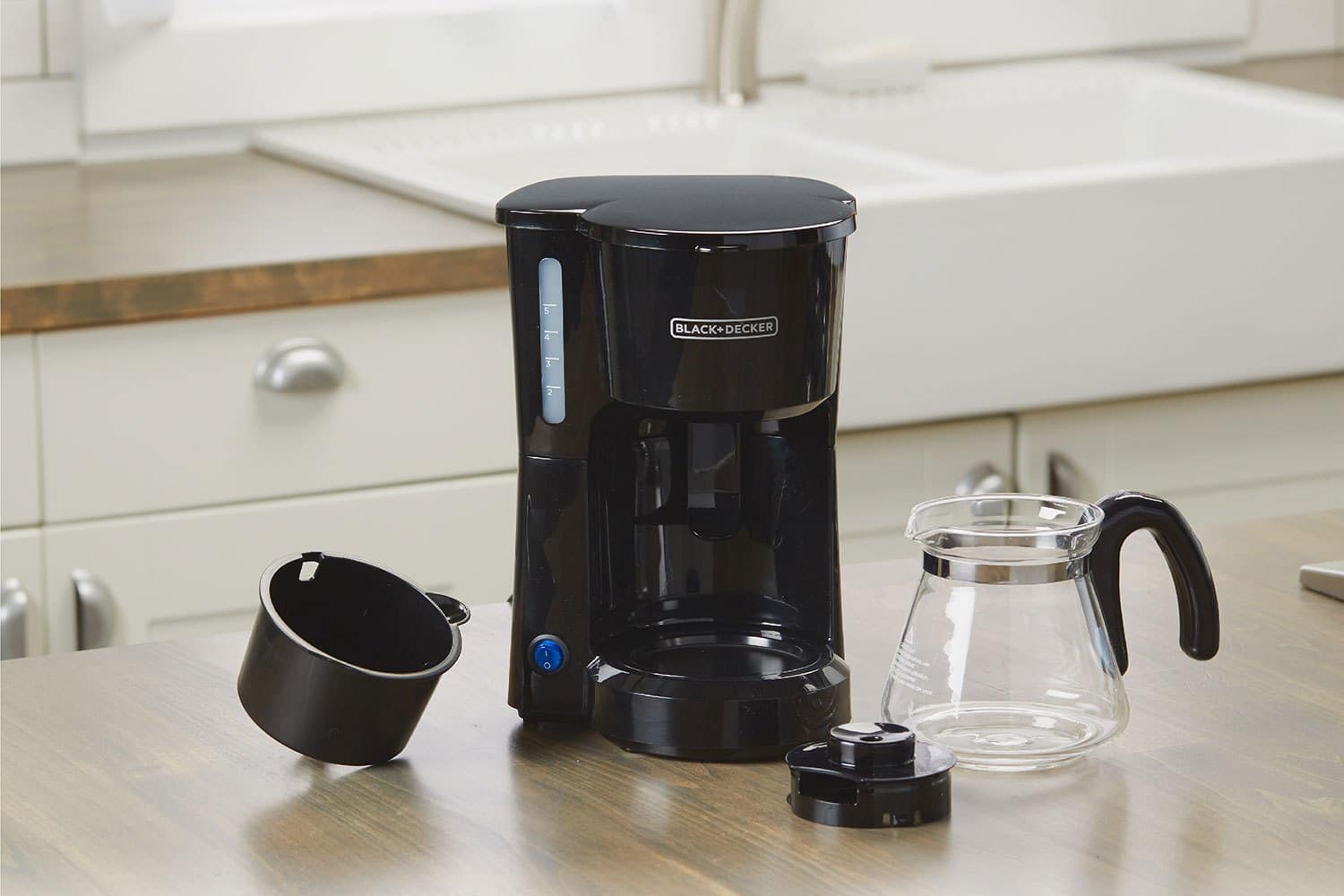
The water tank has a resistance that heats the water. The filter is where the ground coffee that will receive the hot water is placed, which, when passing through it, forms the coffee. It then enters into a glass jar that rests on a heating plate. It is called drip since the hot water passes from the water tank to the filter in small jets.
The features of an electric drip coffee maker:

It consists of a cylindrical container that fits another piece, which is the filter and a vertical tube through which the water will pass.
Electric percolators are not widely used devices, but they are still very useful and offer a quality drink.
These coffee makers are originally from the American culture and work by taking advantage of the heat to circulate the water inside to infuse coffee.
Unlike other coffee makers, in the percolator, the water takes advantage of the force of gravity for its circulation. Thanks to this system, you get a coffee with an exquisite aroma and texture, which will be more or less strong depending on the user’s taste.
Another advantage of this system is that it allows you to prepare several liters of coffee, depending on the design of the brewer. It is the best way to prepare large quantities of coffee at once, something that is not achieved with any other machine. It is also a handy tool for camping.
On the other hand, depending on the model you choose, you can keep the coffee hot as long as you want. Thanks to the fact that they have a base, which has a heating plate. Once it is ready, you can drink it at any time of the day, since it will not grow cold.
The cold brewing coffee maker is one of the most fashionable and innovative machines.
The first traces of the practice of cold infusion dates back to the 17th century. Imported into Japan by Dutch traders from Indonesia, this technique was probably developed to easily produce and transport large quantities of coffee that could be reheated later.
Japan later developed this practice in an ingenious form, known today as “Kyoto-style” cold coffee. It is usually in the form of a tower-shaped structure. The coffee is extracted drop by drop to reveal a subtle and tasty aroma.
In addition to providing maximum freshness, the resulting coffee made by cold-brew makers offers admirable lightness. However, they retain the subtlety of the aromas.
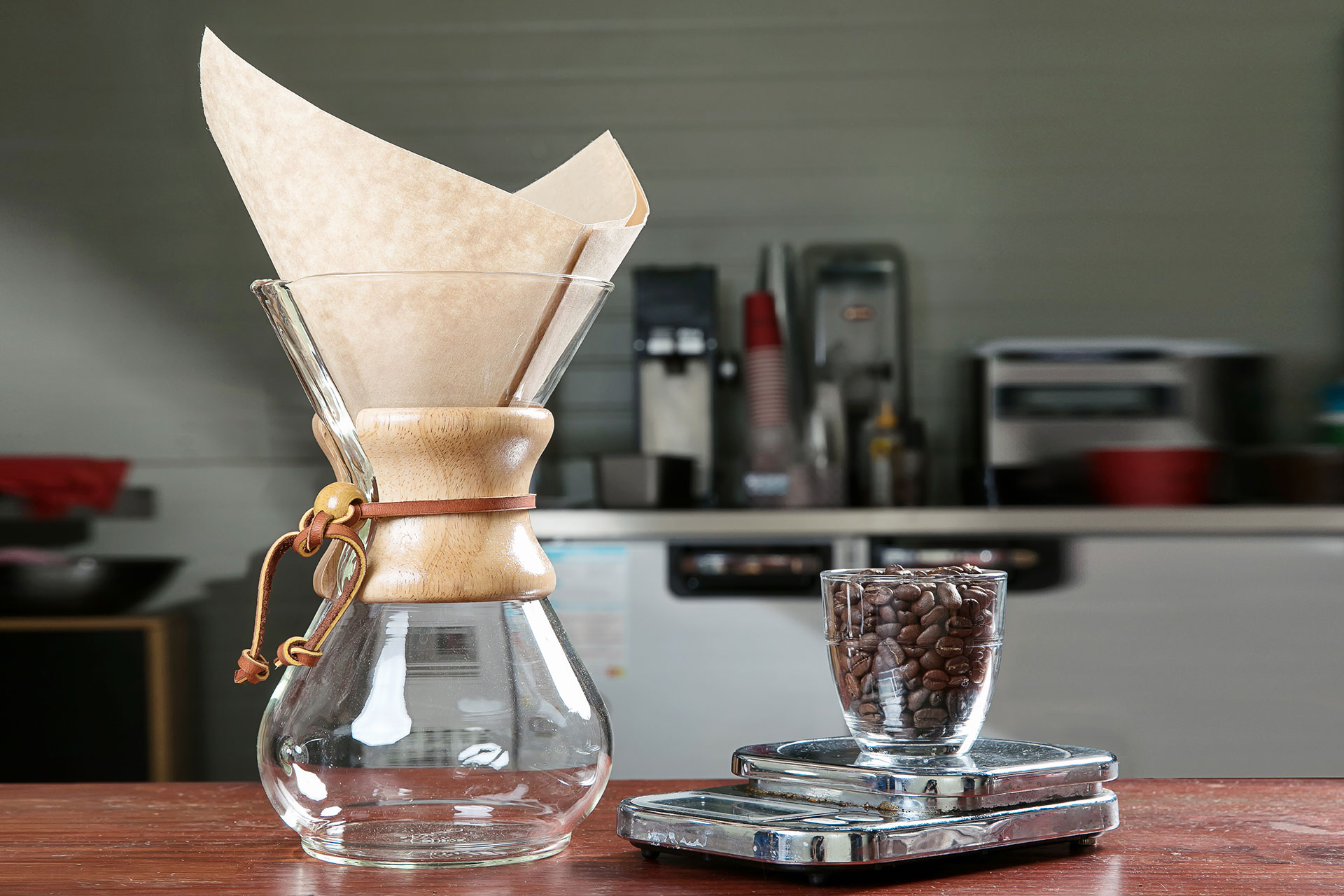
Its round paper filter is responsible for this feature. When folded, it creates a triple “wall” that prevents the passage of coffee particles.
Using the recommended ratio of 18g to 300ml of water, you have to bend the filter and fit it into the Chemex. After scalding the filter and discarding the water, pour the ground coffee – medium to coarse – and cover with water to pre-brew.
Wait a few seconds and as soon as the water has finished dropping, keep adding water in a circular motion, prioritizing the darker parts of the dust. Keep this process until the drip stops and serve immediately!
The pressurized method comes to guarantee an even stronger and fuller experience. They are achievable in espresso machines. Espresso coffee makers have been increasingly modernized, and their functionality contributes to the interest in these machines. But how does each model work?
Semi-automatic espresso coffee machines are a good option for those who know coffee and also these machines. They require specific care with grinding and dosing of the coffee. A semi-automatic espresso machine does not differ much from a manual. It is a compromise between automatic and manual preparation. If you want to be in complete control of the brewing process, you should check our selection of the best manual espresso machines.
Some functions of semi-automatic coffee makers can also be adjustable, such as pressure, preparation time, and temperature. Although semi-automatic still requires measuring and compacting ground coffee, the big difference between it and a manual espresso machine is that the first has a specific schedule for a certain amount of coffee – one or two cups, normally.
Automatic and super-automatic espresso coffee makers are widely used in commercial establishments. Even if the quality of the drink is somewhat vulnerable, these coffee makers have an efficient and easy-to-operate grinder.
In these models, characteristics such as the volume of water and the pressure it is subjected to are pre-defined. Super-automatic espresso machines are very powerful and tend to have the highest values on the market.
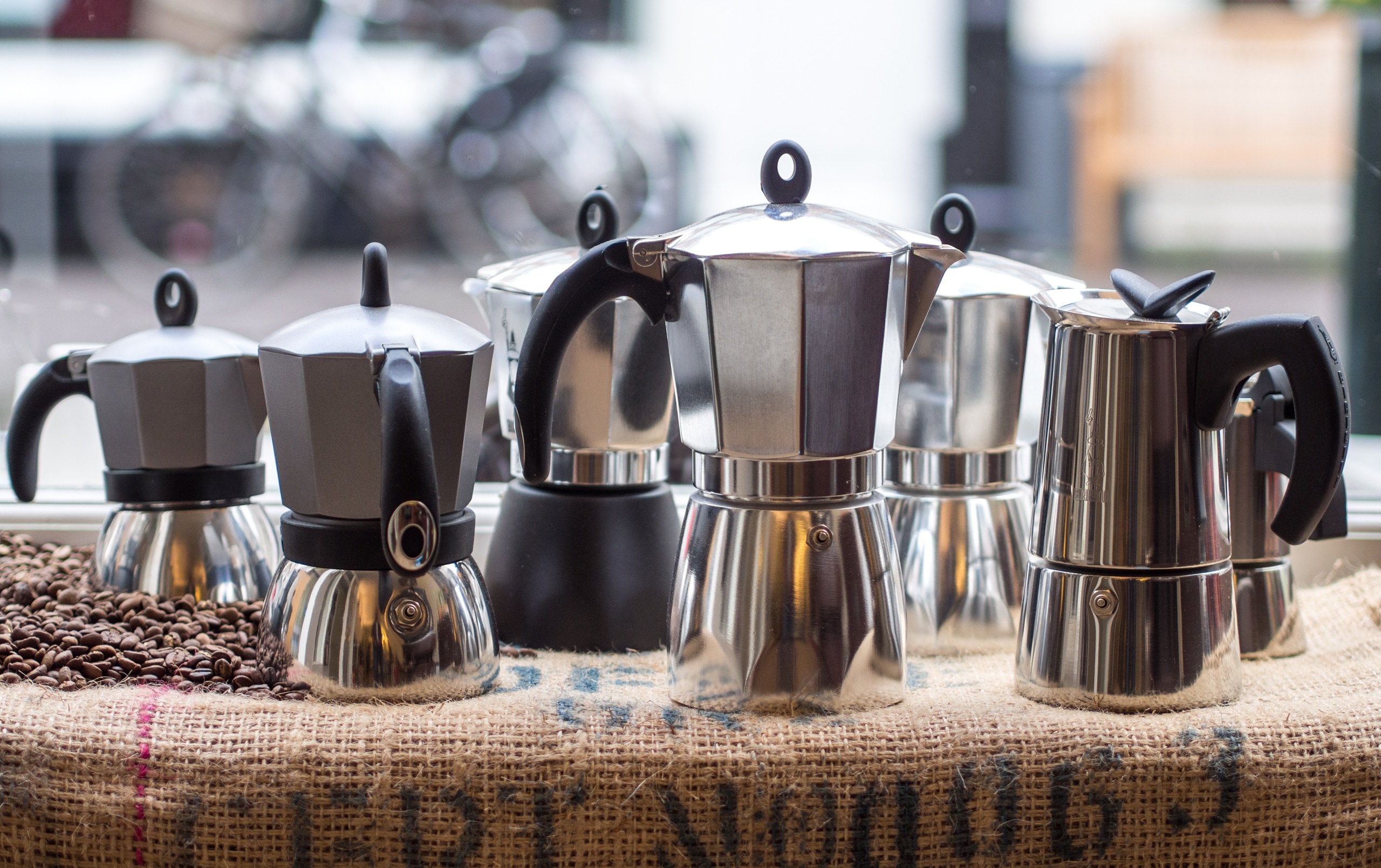
This method works by water pressure. That is to say, when it is about to boil, the water rises and passes through a container with the coffee, heading towards the upper compartment.
Simply pour water down to the valve height and the coffee grounds into the container that fits inside the base. As with the French Press, the indicated grinding of the beans is “coarser” so that the metal filter is not clogged.
When the water starts to rise to the center tube of the top container, just wait about ten seconds and turn off the fire.
Tip: Splashing cold water on the top of the coffee pot will not make the drink get burnt when it touches the aluminum walls of the Moka.
A single-serving coffee machine has very specific characteristics. It is not a closed typology, but most models usually meet some (or all) of the following specifications:
As you can see, most portable coffee makers are single-serve (they only serve one person at a time), but not vice versa. Not all single-serve coffee machines are also portable. Some are designed to be put in your kitchen and prepare a cup of American filter coffee or espresso to drink on the street when you leave home. Others are made specifically for those who work away from home. If you are in vital need of a morning espresso at your workplace, we recommend reading our review of the best office coffee makers.
With Aeropress, any slight change in brewing time, grain size or water temperature makes a big difference in the taste of the drink. These make it a darling among coffee making techniques around the world.
Its anatomy, developed by Alan Adler, resembles a giant plastic syringe that makes the drink ready by air pressure. First, the coffee is placed in the central tube. Then 60 ml of water is added at 80°C (it is good to have a balance for this method) and mix gently. Then add another 170 ml of water and let it infuse for 10 seconds.
Following this, a circular paper filter is placed inside a piece that is screwed into the tube. Hence, the most important moment: this whole set is turned upside down by placing the mouth of the tube straight over the cup.
The plunger inside the tube pushes down the air so that the coffee is forced through the filter and the drink is ready.
This method results in a smooth and tasty drink with less bitterness and acidity.
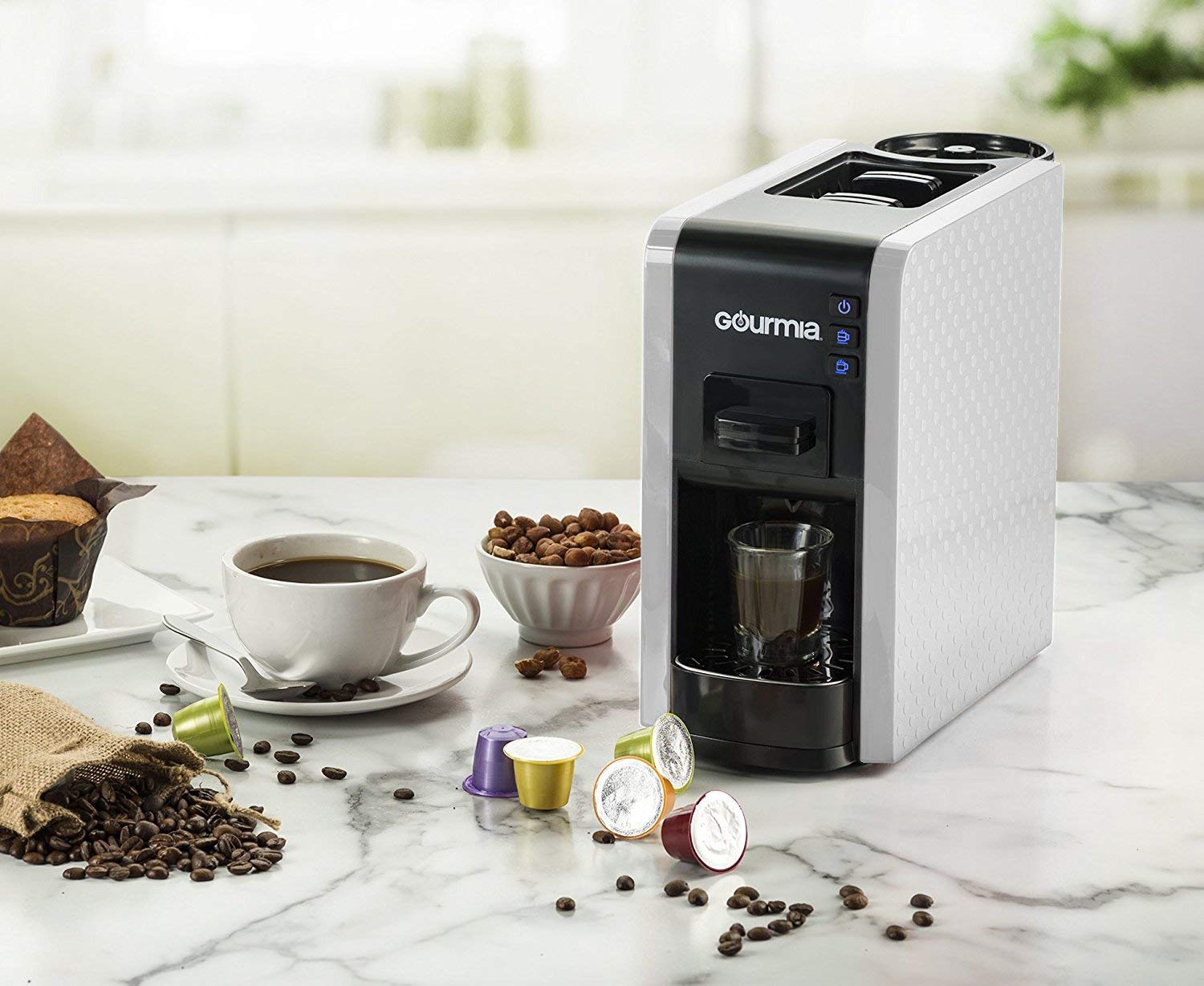
A capsule coffee maker works under pressure, like other models in this section. But it does not require a coffee grinder, for example. There is no need to worry about the right dosage of coffee or even the muddiness of the powder after the espresso is ready. The right measurement, water pressure, and temperature are automatic.
Now you’ve seen what the different types of coffee makers are. Each method presented herein has unique qualities, just as each person has different needs when making coffee. We hope we helped you find which one suits your style best!
Making a delicious coffee is no secret, but there is a golden tip: use quality beans!
